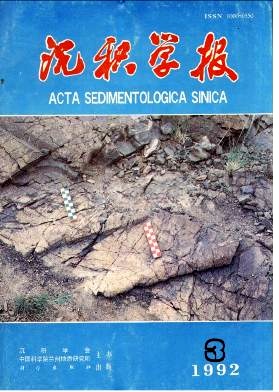Late Paleozoic Deep Water Carbonates and Their Relation-ship with Oil and Gas, South China
- Publish Date: 1992-09-10
Abstract: The deep water carbonate study in China began at the end of 70s. The Late Paleozoic and Early Triassic deep water carbonates in Nanpan River area is far better Known, as a whole, than are the those else-where in China, which were initially described and studied in some detail by Carbonate Research Section of SWPI. Since 1980, Subsequent work has been done more detaily by many people and units. Deep Water Carbonates which bear several kinds of mineral resources, distribute in East Yunnan, South Guizhou, Guangxi, North Guangdong and South Hunan from Late Paleozoic to Early Triassic, and with very thick sequences. Detailed research on deep water carbonate in this area has obviously theoretical and economic significance. During the Late Paleozoic, the research area located at the passive continental margin of S-SW part of South China Plate. The main tectonism that developed in this area was rift. There were a series of NW and NE rifts occured, but the main orientation was NE. The grabens surrounded the isolated horsts and had long active history. There were also a series of NE and NW rifts developed on the in-continente in North Guangxi, North Guangdong and South Hunan and created grabens which surrounded the isolated horsts. These isolated horsts, with near-shore platforms, developed into isolated carbonate platforms and the inherited shallow water carbonate depositional areas while the narrow grabens in which the deep water carbonate turbidites and some volcanic clastic turbidites, as well as silicatites deposited. On the slopes of isolated platforms, the by-pass margin depositional beds developed. The generation, development and extinction of rifts and splitting fault troughs were not simultaneously and formed discordant interplatform trough, platform margin slope environments. Except Qingzhou inherited surviving trough, the rift troughs developed at the continental margin area in South east Yunnan, South west Guangxi at the first time. From the continental margin to in-continental area, the development of rift troughs was tardy gradually with NE trend. The rift troughs in South Hunan has not start to develop until Late Devonian. The paleo-geographic framework of trough-platform extincted in Late Carboniferous in Northeast Guangxi. After the Dongwu Orogery, the trough- platform framework survived only in Nanpan River depression area and continued to Middle Triassic. The strong tectogenesis and deep rift troughs developed all over the Late Paleozoic, the obviously volcanic activity distributed along the rifts. The isolated platforms, which were limited by deep rift troughs, were relatively small in area and with great on numbers. Meanwhile, very weak tectogenesis and shallow rifts developed in the in-continental area. No volcano acted along the shallow troughs. The by-pass margin-depositional margin or depositional margin sediments occured on the slopes. Usually tie continental platform margins show the characteristics of ramp with very thick depositional margin sediments sequences. The extinction of platform-trough framework was as a result of weak tectogenesis and super-input of sediments. During the Late Carboniferous (Weining stage) , the small rift troughs with some deep water carbonates developed in Longyan, West Fujian, Guangzhou and Zhaoqing, South Guangdong. Including isolated platforms, inter-platform troughs and the margin slope of tie continental platform, the deep water environment is determined as under storm wave base. According to petrologic, paleotonlogic, paleoecologic characteristics, intergrated with the information of trough development and platform margin topographic condition, the research area can be divided into several sub-environments in the Late Paleozoic. According to geochemical analyses, the very prospective hydrocarbon source rocks distribute in the middle to low margin slopes of isolated platform, deep ramps of tie continental platform margin and inter-platform troughs. Although the content of organic carbon is higher and the silicalite and siliceous mud are the good hydrocarbon
| Citation: | Hou Fanghao, Fang Shaoxian, Zhang Tingshan, Dong Zhaoxiong, Wu Yi. Late Paleozoic Deep Water Carbonates and Their Relation-ship with Oil and Gas, South China[J]. Acta Sedimentologica Sinica, 1992, 10(3): 133-144. |






 DownLoad:
DownLoad: